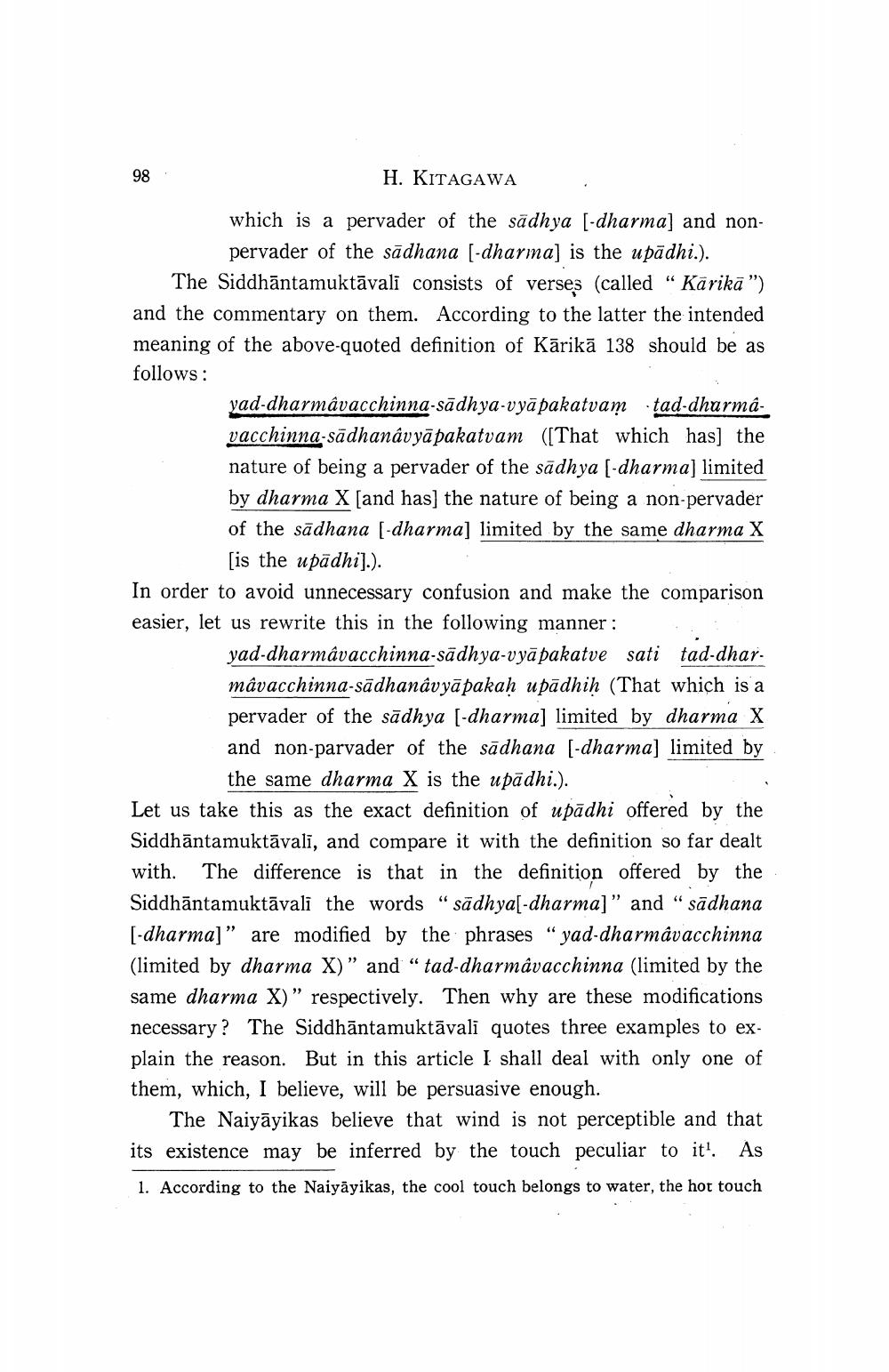________________
98.
H. KITAGAWA
which is a pervader of the sādhya [-dharma] and non
pervader of the sādhana (-dharma) is the upādhi.). The Siddhāntamuktāvali consists of verses (called “Karika") and the commentary on them. According to the latter the intended meaning of the above-quoted definition of Kārikā 138 should be as follows:
yad-dharmâvacchinna-sādhya-vyāpakatvam tad-dharmavacchinna-sādhanavyā pakatvam ([That which has] the nature of being a pervader of the sādhya [-dharma) limited by dharma X and has the nature of being a non-pervader of the sādhana [-dharma] limited by the same dharma X
[is the upādhi].). In order to avoid unnecessary confusion and make the comparison easier, let us rewrite this in the following manner:
yad-dharmâvacchinna-sādhya-vyā pakatve sati tad-dhar. mávacchinna-sādhanavyāpakah upādhih (That which is a pervader of the sādhya (-dharma] limited by dharma X and non-parvader of the sādhana [-dharma] limited by the same dharma X is the upādhi.).
his as the exact definition of upādhi offered by the Siddhāntamuktāvali, and compare it with the definition so far dealt with. The difference is that in the definition offered by the Siddhāntamuktāvali the words "sādhya[-dharma]” and “sādhana [-dharma] ” are modified by the phrases "yad-dharmavacchinna (limited by dharma X)” and “tad-dharmâvacchinna (limited by the same dharma X)" respectively. Then why are these modifications necessary ? The Siddhāntamuktāvali quotes three examples to explain the reason. But in this article I shall deal with only one of them, which, I believe, will be persuasive enough.
The Naiyāyikas believe that wind is not perceptible and that its existence may be inferred by the touch peculiar to it! As 1. According to the Naiyāyikas, the cool touch belongs to water, the hot touch




